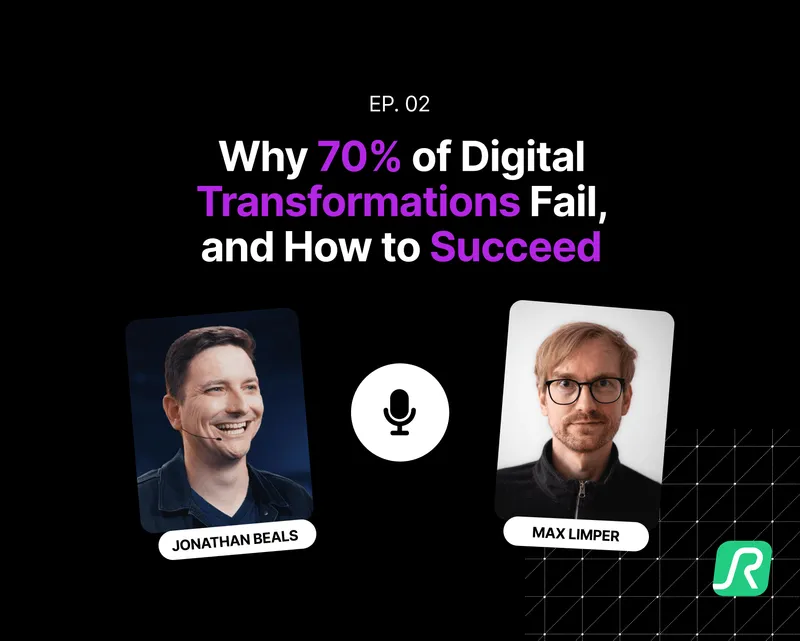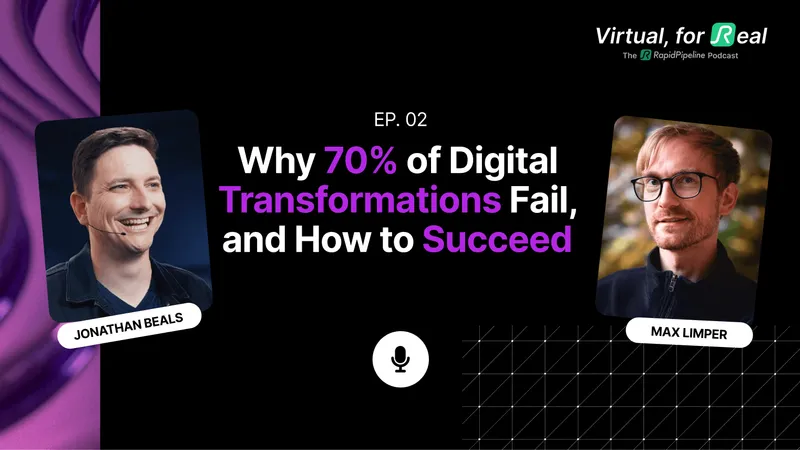
Table of Contents
In this episode of Virtual for Real, host Max welcomes Jonathan Beals, former leader of 3D digital product creation at Nike, now a Solutions Consultant at Adobe. Their conversation takes us on a journey from Jonathan’s early days in aerospace engineering to redefining how some of the world’s top brands approach design, iteration, and innovation.
But this isn’t just a career story, it’s a deep dive into how digital twins, AI, and immersive design are rewriting the rules of product development, and what it really takes to bring those innovations to life in complex organizations.

Highlights from the Episode
1. From Aerospace to 3D Pioneer
Jonathan opens up about his unexpected journey, starting in aerospace engineering before pivoting into 3D art and eventually leading groundbreaking 3D design work at Nike. His early experiences in VFX gave him a creative edge that helped him see the untapped potential in product pipelines.
2. Building Nike’s 3D design ecosystem
At Nike, Jonathan built one of the first material libraries and scaled a team from 1 to over 30 people, aligning footwear and apparel teams and implementing a fully digital pipeline. His team generated more than $50M in business value, all while changing the way Nike designs and collaborates.
3. What is a Digital Twin (really)?
Jonathan makes a clear distinction between digital twins, virtual twins, and 3D prototypes. According to him, most brands stop at the visual layer — missing out on the 70% of value that comes from connecting those assets to live data and real-time decision-making.
4. A game-changing use case at Nike
One of the most compelling stories in the episode: a high-stakes innovation project at Nike that was failing after a year of unsuccessful iterations. Jonathan’s team stepped in with a parametric 3D workflow, cutting development time drastically and saving the product line.
5. Why most 3D transformations fail
Despite the potential, Jonathan explains why 70% of digital initiatives fail, often due to a disconnect between creatives, engineers, and business leadership. Designers aren’t trained to speak the business language, and leadership rarely understands the depth of creative workflows.
6. Advice for middle managers driving change
If you’re not a VP or C-suite exec, what can you do? Jonathan offers a step-by-step strategy:
- Start small with a single, well-defined business problem
- Align on KPIs with your leadership
- De-risk the initiative and prove ROI
- Build credibility before scaling
7. The future: Living assets, AI & Brain Interfaces
The episode closes with a bold vision: AI-driven co-creation, living 3D models connected to real-time data, and even neural interfaces that could make immersive design feel real to our senses. Designers, Jonathan argues, will shift from "creators" to curators, and the whole industry will evolve.
💡 Key takeaways
- A digital twin is not just a pretty 3D model, it’s a live, data-connected system.
- Most companies are leaving massive value on the table by ignoring that connection.
- Change comes from the middle: designers and team leads have the power to start small, prove value, and grow innovation inside out.
- The future of design is not just visual, it’s experiential, data-driven, and AI-augmented.
For all key information and the best possible insights directly from Jonathan and Max, check out this episode of Virtual, for Real – it's worth a listen!
📣 Where to Listen
🎧 Virtual, for Real is available on:
- Spotify
- Apple Podcasts
- YouTube
For full episodes & show notes, visit: podcast.rapidpipeline.com
Meet the Author

DGG Team
The 3D Pipeline Company
DGG is on a mission to connect the real and virtual by making 3D models as easy to handle as 2D images.
